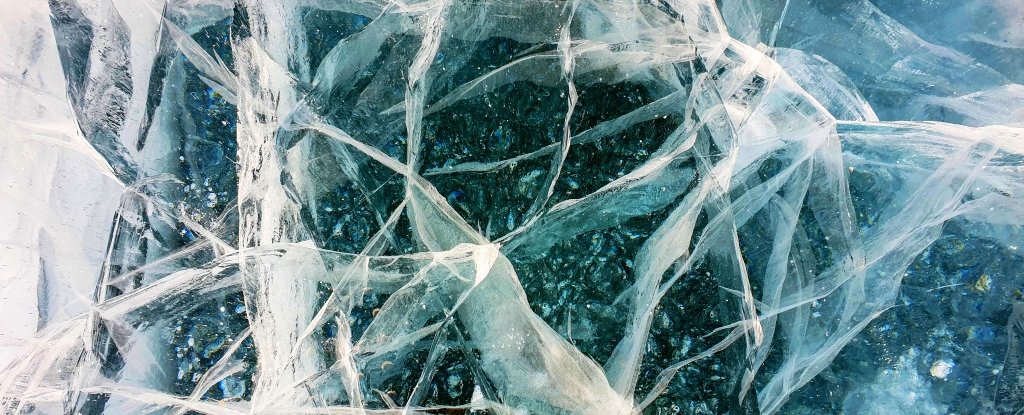
Not all water ice is the same. Locked inside, the arrangement of the molecules varies significantly, depending on the conditions of pressure and temperature in which they are formed.
I knew of 18 of these distinct phases of ice, some that occur naturally, others observed only in laboratory conditions.
Three years ago, a team of researchers modified one of the existing ice structures, turning it into a shape they called β-XV ice. Now the members of that team have determined the exact crystal structure, answering questions about how it is formed and giving it the name Ice XIX.
This discovery could help us better understand how ice forms and behaves in alien conditions very different from those found on Earth.
Ice that you see in the freezer or that falls from the sky like snowflakes or hail, is the most common natural ice on Earth. This is called ice I, and its oxygen atoms are arranged in a hexagonal lattice. However, the structure is geometrically frustrated, with the hydrogen atoms much more disordered.
When ice I is cooled in a certain way, the hydrogen atoms can become periodically ordered, in addition to the oxygen atoms. This is how scientists in a laboratory can create different ice phases that have much more ordered networks of crystal molecules than their disordered parent forms.
A team of physical chemists from the University of Innsbruck in Austria has been working on ice phase VI for some time. This is one of the forms of ice that can be found in nature, but only under very high pressures 10,000 times higher than atmospheric pressure at sea level (about 1 gigapascal), such as those found in the Earth’s mantle or wrapped around Saturn’s moon moon Titan.
Like ice I, ice VI is relatively messy. Its ordered form of hydrogen, ice XV, was discovered only about a decade ago. It is created by cooling ice below 130 Kelvin (-143 degrees Celsius, -226 degrees Fahrenheit) at pressures around 1 gigapascal.
A few years ago, by changing this process, researchers created another phase of ice. They slowed the cooling and took it below 103 Kelvin and increased the pressure to 2 gigapascals. This produced a second arrangement of hydrogen molecules that was distinct from ice XV, which they labeled β-XV ice.
Validating that the ice was a separate phase was a separate obstacle, requiring the replacement of normal water with “heavy” water. Normal hydrogen has no neutrons in the nucleus. Heavy water, on the other hand, is based on deuterium, a form of hydrogen that has a neutron in its nucleus.
To calculate the order of atoms in a crystal lattice, scientists must scatter neutrons in nuclei so that normal hydrogen atoms will not cut it.
“Unfortunately, this also changes the time intervals for orders in the ice making process,” said physical chemist Thomas Loerting of the University of Innsbruck.
“But PhD student Tobias Gasser then had the crucial idea of adding a few percent of normal water to heavy water – which proved to speed up the order enormously.”
This allowed the team to obtain the neutron data they needed to split the crystal structure. As they believed, it was different from the 15th ice, earning it an official place as the 19th known phase, the 19th ice.
This makes the phase pair brothers – the first known that has the same structure of the oxygen network, but with different arrangements of hydrogen atoms.
“This also means that for the first time it will be possible to make the transition between two ice forms ordered in experiments,” said Loerting.
The research was published in Communications about nature.